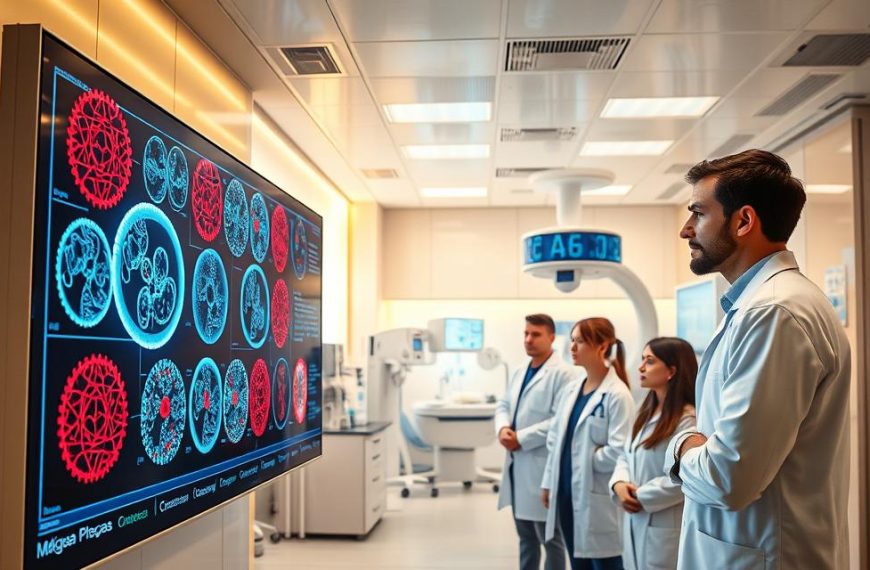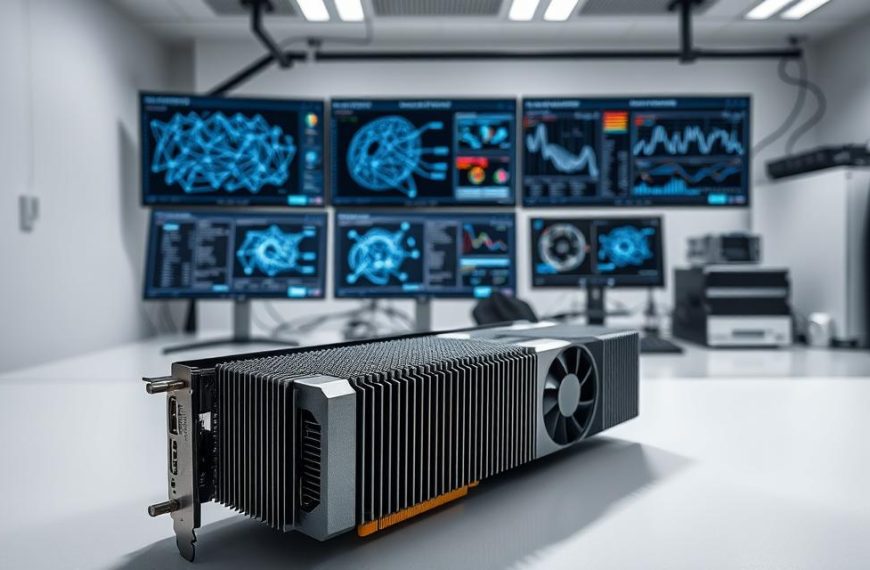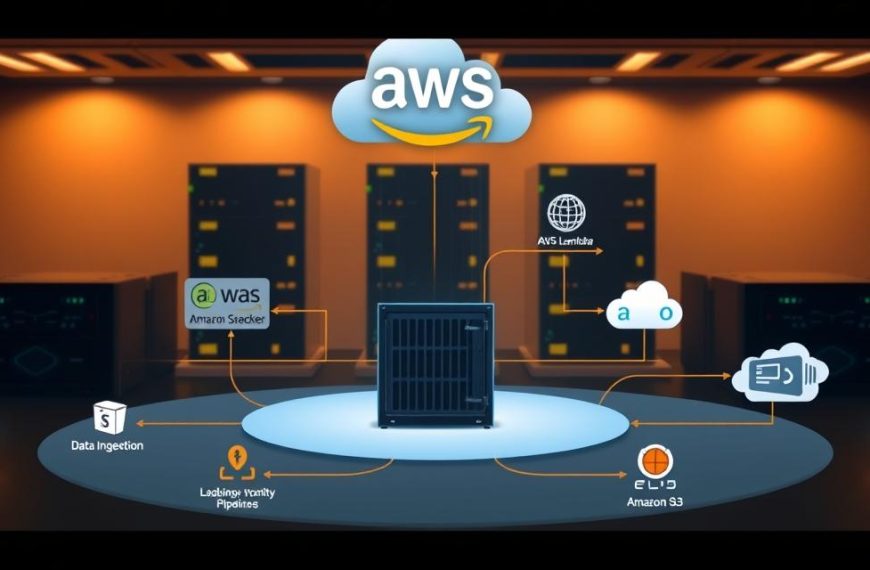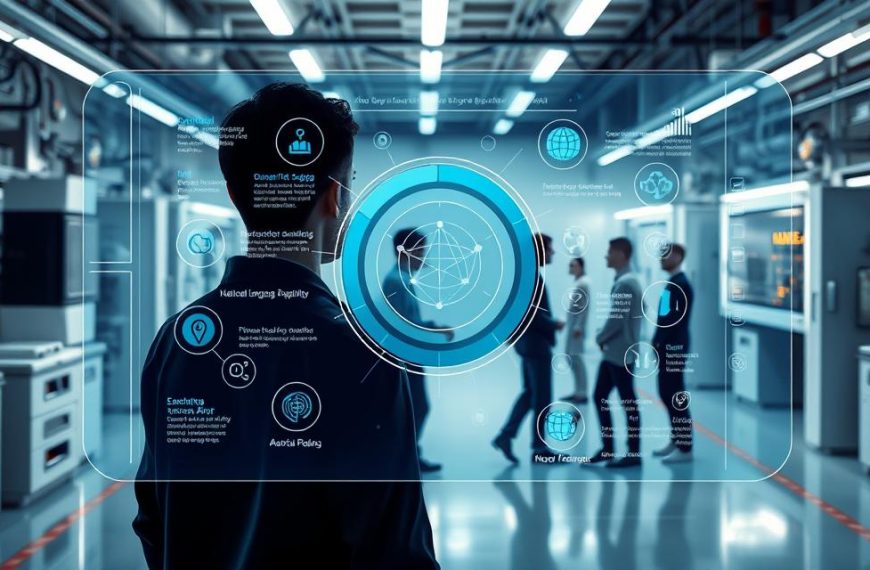Modern technology increasingly relies on systems that mimic human decision-making, powered by advanced computational techniques. At the forefront of this revolution lies a branch of artificial intelligence that utilises multi-layered neural networks to process complex data patterns. These architectures enable machines to recognise speech, detect fraud, and even navigate roads autonomously.
Unlike traditional machine learning approaches requiring labelled datasets, this method thrives on raw, unstructured information. By analysing millions of data points through interconnected layers, systems develop the ability to self-improve without constant human oversight. From smartphone assistants to generative AI tools, these innovations now permeate daily life across Britain.
Many assume such technologies belong solely to tech giants or research labs. In reality, their applications span healthcare diagnostics, financial forecasting, and retail personalisation. This guide unpacks how layered network structures unlock these capabilities, offering clarity for newcomers navigating technical jargon.
We’ll explore why these systems outperform conventional algorithms in handling ambiguity. You’ll discover how they adapt to new information while maintaining accuracy – crucial for real-world scenarios like fraud detection in banking. By the conclusion, the mechanisms behind voice-activated devices and autonomous vehicles will feel less like magic and more like logical engineering.
Introduction to Deep Learning: Concepts and Evolution
Technological progress now hinges on systems that evolve autonomously. At its core lies a learning subset machine approach, where algorithms analyse patterns independently. This marks a departure from conventional methods demanding constant human input.
Defining Core Principles
Artificial neural networks mirror the human brain’s decision-making processes. These layered structures digest raw inputs – text, images, or sounds – without pre-processed labels. For instance, analysing customer behaviour patterns in retail now occurs without manual data sorting.
From Manual to Autonomous Systems
Traditional machine learning relied on curated datasets. Experts spent months tagging images or correcting algorithm errors. Modern architectures instead thrive on unstructured data, like social media content or sensor readings. Banks now detect unusual transactions through raw payment records rather than pre-defined fraud indicators.
| Factor | Traditional Machine Learning | Deep Learning |
|---|---|---|
| Data Handling | Requires structured, labelled inputs | Processes raw, unstructured data |
| Human Effort | Manual feature extraction | Automatic pattern recognition |
| Scalability | Limited by hand-coded rules | Adapts through layered networks |
| Real-World Use | Fraud detection with preset parameters | Voice recognition in smart devices |
This shift emerged through decades of research. Early neural networks in the 1980s handled basic pattern recognition. By 2012, architectures using deep learning techniques mastered complex tasks like real-time translation. Tech firms now leverage these advancements for medical imaging analysis and self-driving vehicles.
What is Deep Learning Model?
Advanced computational architectures power today’s intelligent systems, using layered structures to interpret complex data. These multi-tiered frameworks process information through interconnected nodes, mirroring how biological networks handle sensory inputs. Neural networks form the backbone of this approach, transforming raw data into actionable insights without constant human intervention.
Understanding Neural Network Layers
Every learning subset machine operates through three core components. The input layer receives unstructured data like images or text. Subsequent hidden layers analyse patterns through weighted connections, adjusting biases to refine accuracy. Final decisions emerge from the output layer, whether classifying objects or predicting stock trends.
| Feature | Basic Neural Network | Deep Learning Model |
|---|---|---|
| Layer Count | 1-2 hidden layers | 50+ hidden layers |
| Data Complexity | Structured inputs | Raw multimedia |
| Real-World Application | Basic classification | Autonomous vehicle navigation |
This layered design enables progressive refinement. Initial layers might detect edges in an image, while subsequent ones identify textures or shapes. Financial systems use this hierarchy to spot transaction anomalies, evolving from single-layer fraud checks to dynamic risk assessments.
Such architectures excel where ambiguity reigns. Voice assistants parse accents through hundreds of layers, unlike early systems limited by shallow analysis. The depth allows learning subset machines to handle unpredictability – whether diagnosing rare diseases or forecasting energy demands.
Deep Learning Algorithms and Neural Network Architectures
Architectural innovations drive progress in systems that interpret visual and textual data. Two frameworks dominate this space: one specialises in spatial patterns, while the other deciphers sequences. Their distinct approaches power everything from medical scanners to voice-activated banking services.
Convolutional Neural Networks and Their Applications
Convolutional Neural Networks (CNNs) excel at analysing pixel-based information. Through layered filters, they identify edges, textures, and shapes in images. Radiologists use these systems to detect tumours in X-rays with 97% accuracy – surpassing human error margins.
Key components include:
- Convolutional layers: Extract features via matrix operations
- Pooling layers: Reduce spatial dimensions while retaining critical data
- Fully connected layers: Generate final classifications
Retailers employ CNNs for shelf monitoring, automatically flagging out-of-stock items. Transport for London uses similar technology in traffic management systems, analysing CCTV feeds in real time.
Recurrent Neural Networks and Sequential Data
Recurrent Neural Networks (RNNs) process information with temporal dependencies, like speech or text. Their feedback loops retain context between words, enabling tools like NHS chatbots to understand patient queries.
| Architecture | Data Type | Key Feature | UK Application |
|---|---|---|---|
| CNN | Images | Local feature detection | Diagnostic imaging |
| RNN | Text/Speech | Sequential memory | Voice banking security |
RNNs power natural language interfaces in smart home devices, adapting to regional accents. Financial institutions leverage them for fraud detection in transaction histories, spotting suspicious patterns across time-stamped data.
Unravelling Hidden Layers and Backpropagation Techniques
Modern neural architectures rely on two interconnected processes to refine their decision-making capabilities. These mechanisms work like a self-correcting feedback loop, enabling systems to learn from both successes and errors.
Forward Propagation in Neural Networks
Forward propagation initiates the learning cycle. Data enters through visible input layers, then undergoes transformations across multiple processing tiers. Each hidden layer extracts progressively abstract features – from basic shapes in images to contextual relationships in text.
Consider how UK supermarkets analyse customer purchases. Initial layers might identify individual items, while deeper tiers detect buying patterns like “nappies and beer” correlations. This hierarchical processing culminates in the output layer, delivering predictions or classifications.
| Process | Function | Real-World Analogy |
|---|---|---|
| Forward Propagation | Data transformation through layers | Chef preparing ingredients |
| Backpropagation | Error correction via weight adjustment | Taste-testing and recipe tweaks |
Backpropagation techniques then refine the system’s accuracy. Gradient descent algorithms calculate prediction errors, working backwards through layers to adjust connection weights. This mirrors how London Underground optimises train schedules – identifying bottlenecks and redistricting resources accordingly.
Together, these processes enable deep neural networks to master complex tasks. Voice recognition systems in NHS helplines, for instance, improve dialect comprehension through thousands of these forward-backward cycles. The architecture becomes increasingly precise, much like musicians refining performances through repeated rehearsals.
The Role of Large Amounts Data in Training Deep Models
Contemporary intelligent systems thrive on data like engines require fuel. Their ability to interpret messy reality stems from exposure to vast datasets – think millions of social media posts or decades of weather records. This raw information feeds neural network architectures, enabling them to discern patterns invisible to human analysts.
Understanding the Importance of Unstructured Datasets
Modern architectures excel at processing unorganised inputs. Unlike spreadsheets requiring neat columns, they digest CCTV footage, voice memos, or handwritten notes. Supermarkets analyse security camera feeds to optimise shelf layouts, while NHS systems review MRI scans without pre-sorted labels.
Three factors make large amounts data indispensable:
- Diversity prevents bias – varied accents improve voice assistants
- Volume enables precision – 50,000 X-rays train accurate diagnostic tools
- Complexity mirrors reality – traffic systems process live weather updates
Unlabelled information offers particular advantages. Banks now detect fraud through raw transaction histories rather than manual tagging. This approach slashes preparation time, letting deep neural systems self-learn from customer behaviour patterns.
However, challenges persist. Storing petabyte-scale datasets demands cloud infrastructure. Training sophisticated systems requires GPU clusters – a hurdle for smaller UK firms. Data quality remains paramount: biased samples create flawed predictions, as seen in early facial recognition controversies.
Successful implementations balance quantity with relevance. Transport for London’s congestion models combine historical traffic data with live Tube usage stats. This mixture allows hidden layers to predict bottlenecks before they form, demonstrating how thoughtful data curation unlocks practical solutions.
Leveraging GPUs and Cloud Computing for Deep Learning
Processing complex data patterns demands robust infrastructure. Traditional CPUs struggle with the parallel computations needed for training sophisticated architectures. This gap has propelled graphics processing units (GPUs) to the forefront, offering thousands of cores optimised for matrix operations.
Accelerating Training Through Parallel Processing
GPUs excel where neural networks require simultaneous calculations. Their architecture handles large amounts data 50x faster than CPUs, crucial for refining algorithms on million-sample datasets. UK healthcare startups now train diagnostic tools on GPU clusters, reducing tumour detection model development from weeks to days.
Cloud platforms address scalability challenges. Services like AWS or Azure provide on-demand access to GPU instances, eliminating upfront hardware costs. Financial institutions leverage this flexibility – Barclays’ fraud detection systems scale resources during peak transaction periods without maintaining physical servers.
Key advantages of combined GPU-cloud solutions:
- Real-time processing of live CCTV feeds for Transport for London
- Cost-effective experimentation for UK university AI research teams
- Automatic resource allocation during training deep neural architectures
While on-premises GPU farms suit sensitive labelled data, most British firms benefit from hybrid approaches. Retail giants like Tesco balance cloud-based customer analytics with local processing for inventory management, demonstrating adaptable infrastructure strategies.
















